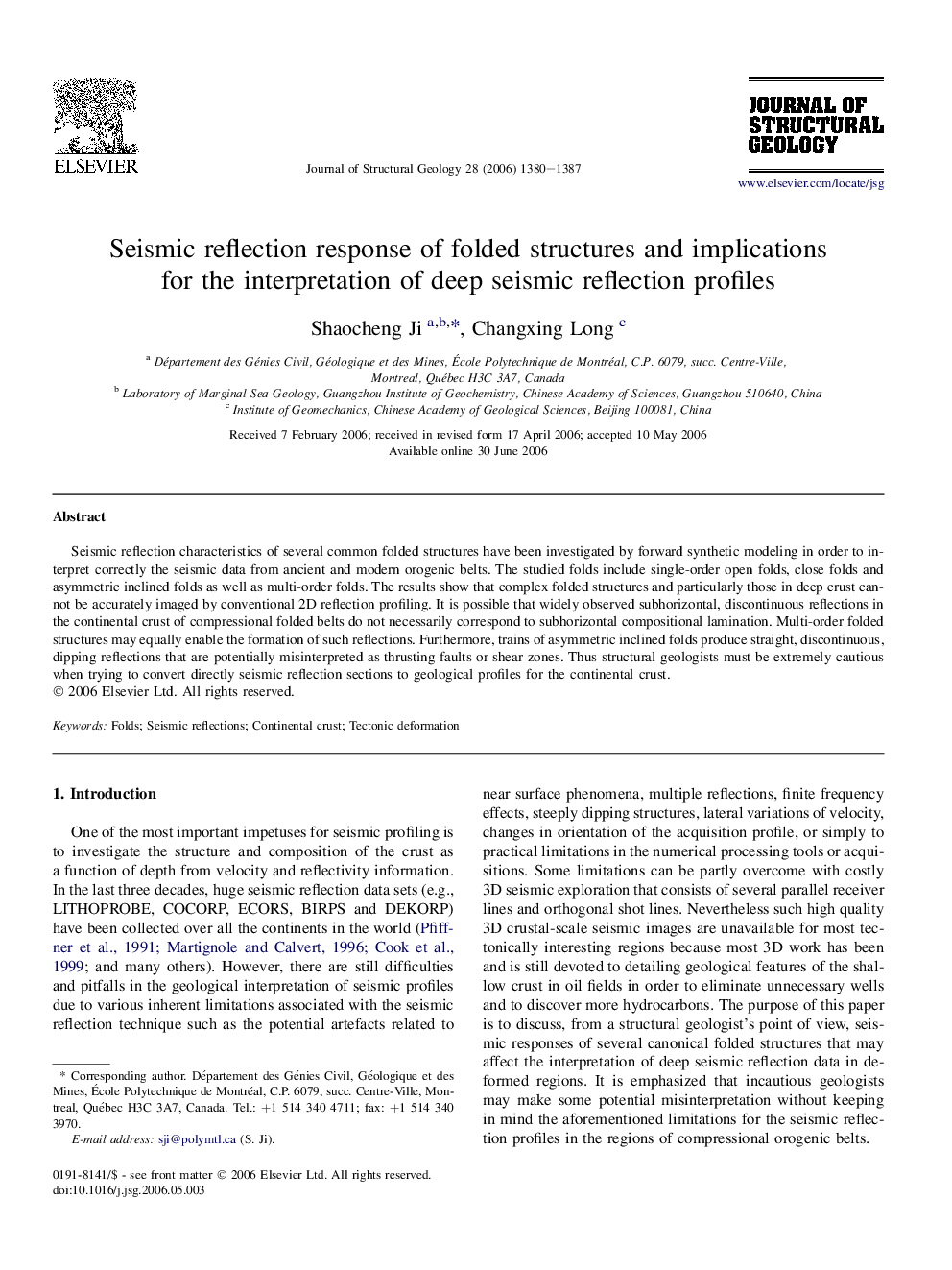| Article ID | Journal | Published Year | Pages | File Type |
|---|---|---|---|---|
| 4734057 | Journal of Structural Geology | 2006 | 8 Pages |
Seismic reflection characteristics of several common folded structures have been investigated by forward synthetic modeling in order to interpret correctly the seismic data from ancient and modern orogenic belts. The studied folds include single-order open folds, close folds and asymmetric inclined folds as well as multi-order folds. The results show that complex folded structures and particularly those in deep crust cannot be accurately imaged by conventional 2D reflection profiling. It is possible that widely observed subhorizontal, discontinuous reflections in the continental crust of compressional folded belts do not necessarily correspond to subhorizontal compositional lamination. Multi-order folded structures may equally enable the formation of such reflections. Furthermore, trains of asymmetric inclined folds produce straight, discontinuous, dipping reflections that are potentially misinterpreted as thrusting faults or shear zones. Thus structural geologists must be extremely cautious when trying to convert directly seismic reflection sections to geological profiles for the continental crust.
